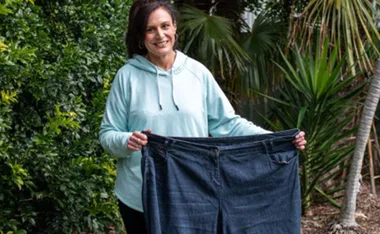For many Australians losing weight and maintaining weight is high on their list of priorities. And when it comes to weight, there is a lot of talk about grain foods – including bread, pasta and cereals – and the role they may play in weight gain. But do grains really contribute to weight gain? Or is it a fallacy?
Despite bad press in recent years, grain foods can play a significant role in helping people to lose weight. In fact, a recent scientific review found that diets high in wholegrain foods and legumes were associated with significantly greater weight loss than other popular diet methods.
Are all grains created equal?
In a word, no. Whole grains – where the three layers of the grain (bran, germ and endosperm) are still intact – offer protection from cancer and heart disease as well as being the grains most associated with weight loss.
How much should we eat?
While the Australian dietary guidelines suggest that we eat plenty of cereals – preferably wholegrain, until now, we haven’t had a specific recommendation for serves of wholegrain foods. Go Grains Health & Nutrition – a leading grains organisation in Australia – has reviewed the research and established a daily target for wholegrain consumption. So now we know we should be aiming for 2-3 serves or 48 grams of wholegrains per day. Meeting this target simply includes eating a serve of wholegrain wheat biscuits for breakfast and two slices of wholegrain bread at lunch.
A wide variety
Along with wholegrain wheat and brown rice, there are many other interesting varieties of wholegrain for you to try.
Rye. A nutrient rich grain that we are becoming more familiar with, rye contains gluten but much less than is present in wheat. Choose rye or pumpernickel breads and try alternating rye varieties with your regular bread purchase.
Buckwheat. Readily available in Australia, buckwheat is commonly made into porridge. You can also add buckwheat to pancakes or try Japanese buckwheat noodles in stir-fries or soups.
Quinoa. (keen-wah) A nutritious grain similar to buckwheat in its texture and taste, quinoa has a high protein content compared to other grains which makes it an excellent inclusion to your meals. Try using it as a substitute to couscous. It is available in health food stores and some supermarkets.
Barley. One of the oldest cultivated cereals, barley is often ground and can be used as an alternative to flour. Dehulled barley is the wholegrain form as it only has the inedible outer layer removed and it is a great addition to soups and stews. Pearled barley, unlike the dehulled variety, is not considered a wholegrain because it is polished and more refined.This information is brought to you by the Sanitarium Nutrition Service. If you would like more information email nutrition@sanitarium.com.auYour Say: Do you get enough grains in your diet? Do you find it helps with weight control? Tell us your thoughts below…
This information is brought to you by the Sanitarium Nutrition Service. If you would like more information email nutrition@sanitarium.com.au
Your Say: Do you get enough grains in your diet? Do you find it helps with weight control? Tell us your thoughts below…











